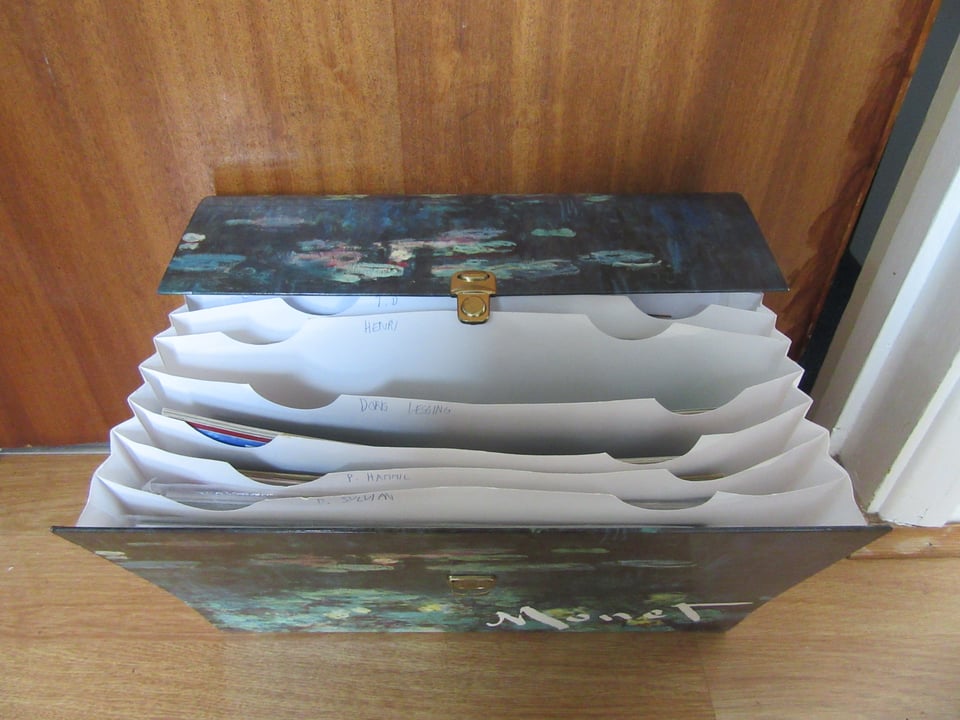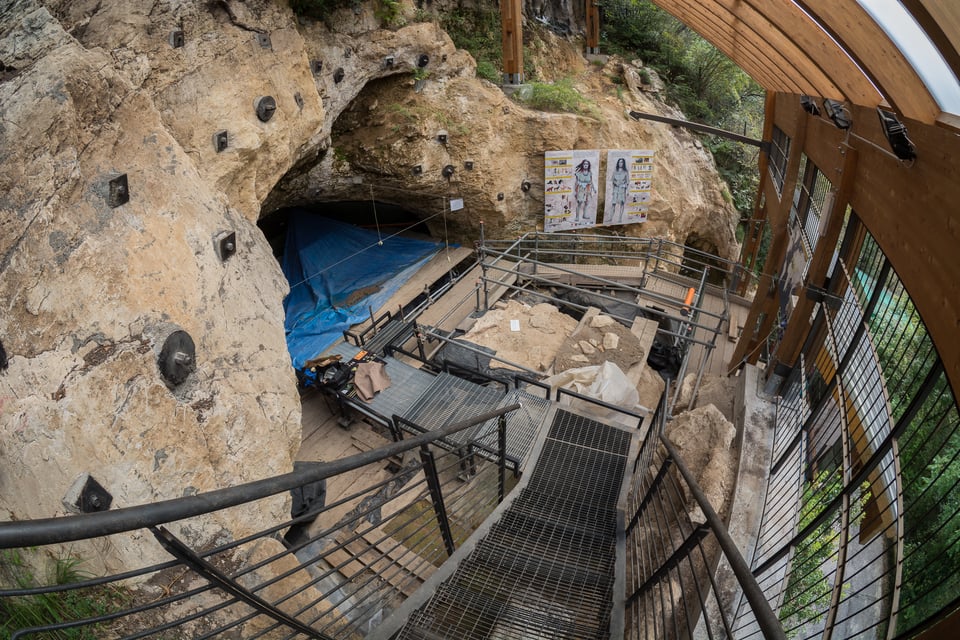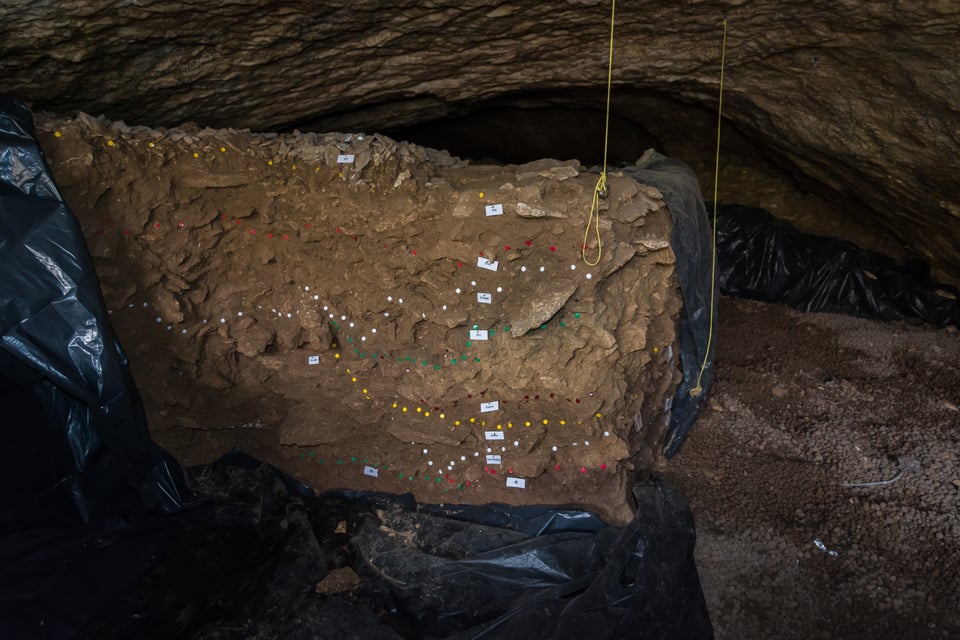A Long Time Ago... #11
Hello there.
Welcome to the eleventh of these posts exploring art, fiction and history. Every other Sunday I share some insights into my two major passions - Star Wars and history, or specifically, ancient art.
Art as a means of representation, observation and meaning, has survived tens of thousands of years, expressed now in a mesmerising multitude of ways. I'm fascinated by its origins, and a particular subgenre of art known as the Star Wars franchise - these two interests combined for my first Star Wars Insider article ART WARS, found in issue #226.
Last week saw the end of my timeline-ordered shelves of books. So, this week, I’m expressing and sharing this fascination by taking you in timeline order through Star Wars short stories, as well as a usual ancient art site that’s inspired my writing.
This week’s post marks the last completed short story. One’s beyond this will be site’s I’ve researched and started writing about but have yet to complete! It’s fitting that this be one final prose writing post. Then we can move onto comics!
In A Galaxy Far, Far Away…

That’s my box of canon Skywalker saga short stories, some old Insider issues, some since I’ve been subscribed to the magazine, and some print outs of stories only online (that you can read FOR FREE). There were some I neglected in the back of paperbacks too, so this’ll be a comprehensive list of every short story I have yet to cover in order, rather than longer explanations like usual. Okay!
First, we have four stories under the title of Galactic Tale, which were in Insider issues a few years ago to celebrate the 20th anniversary of Episode II: Attack of the Clones, and so are set in that Clone Wars era.
The Wesell Run (Insider 209) by S.T. Bende focuses on the Zam Wesell, the shapeshifting bounty hunter from the start of Episode II, as well as Jango Fett.
Inheritance (Insider 211) by George Mann showcases the diner-owner Dexter Jettster’s knowledge of the galaxy, just like the film. This is such a fun story with a sense of the history. This also happens to be the issue I got signed by Mann at Celebration last year, as well as Insider’s editor Chris Cooper when I first met him. (We know what that led to!)
Saber Truth (Insider 210) by Richard Dinnick is a fun Clone Wars story about the lightsaber-loving villain General Grievous. We still need more stories about the cyborg!
From The Shadows Come the Kran (Insider 212) by Rodney Barnes is a Mace Windu story, really capturing the character on a Clone Wars-era mission involving the titular Kran. I’m happy we will be getting a Mace novel soon!
All these next stories, about from those stated otherwise, can be found within Insider Fiction Collections 1 or 2, definitely an easier way to own all these stories, with the original art in nice hardcovers.
Kindred Spirits (Insider 169/Dark Disciple paperback) by Chrisite Golden is an Asajj Ventress story, between her last appearance on The Clone Wars show and the start of Dark Disciple. It was a great tactic at the time to have an author of a novel write a tie-in story for the magazine.
Orientation (Insider 157/Lords of the Sith paperback) by John Jackson Miller is the Rae Sloane cadet story I mentioned in #3 of these posts. It’s interesting as while Sloane is John Jackson Miller’s character originally, this is tying into and is included in a book he didn’t write.
The End of History (Insider 154) by Alexander Freed follows an antique-dealer helping an early rebel. But if the Empire find the Jedi artefacts, will it be the end of history?
TK-462 (Insider 166) by Sylvain Neuvel is an insightful story from the POV of a stormtrooper, set over ten years.
Rebel Bluff (Insider 158) by Michael Kogge, features Lando Calrissian after his appearance in the first season of the animated show Rebels.
The Voice of the Empire (Insider 170/Catalyst paperback) by Mur Lafferty, who I’ve now met at Wolrdcon in Glasgow! It’s tied to Rogue One, featuring its antagonist Orson Krennic, told from the point of view of a journalist in a time when the Empire controls HoloNet News.
Then we’re onto the time of Episode IV: A New Hope.
Inbrief (Insider 161/Battlefront: Twilight Company) by Janine K. Spendlove tells the story of Brand before they join the titular company of the Battlefront novel.
Last Call at the Zero Angle (Insider 156) by Jason Fry gives a good look at TIE fighter pilots during their time off, talking and fighting in a bar.
One Thousand Levels Down (Insider 151) by Alexander Freed is set as its title suggests, low down on the city planet Coruscant. It’s great to get the POV of Alderaanian refugees that aren’t soldiers.
These next three stories aren’t in the collections, as they’re more recent Galactic Tales, this time tying into Episode VI: Return of the Jedi.
Valnir and Laizhu (Insider 222) by Richard Dinnick follows two workers trying to escape Jabba’s Palace in the time that Lando’s there undercover.
Shockwave (Insider 220) by Alexander Freed is a great emotional story about a pilot during the Battle of Endor.
Lost in the Woods (Insider 221) by S.T. Bende is set just after the battle, with a rebel, C-3PO and Wicket the Ewok searching for a crashed pilot.
Blade Squadron (Insider 149-150/starwars.com Part One, Part Two) by David J. and Mark S. Williams, technically takes place before that last one, following the squadron over the forest moon of Endor. It was actually the first written story in the new canon! I love how this two-parter then became a series, following these characters in the other major battles in the last year of the Galactic Civil War, featured in other books/media.
Turning Point (Insider 169) by Jason M. Hough follows a tracker made to work for the Empire just after the battle.
The Light You Bring and Count to Three by Joanna Berry were two stories for EA’s website, tying into the video game Squadrons, focussing on its pilot characters.
Then comes more Blade Squadron: by the same authors, as I said before. Zero Hour (Insider 160), Kuat (Insider 168/Aftermath: Life Debt paperback) and Jakku (Insider 172/Aftermath: Empire’s End paperback).
Scorched (Insider 165/Bloodline paperback/starwars.com) by Delilah S. Dawson jumps us ahead in the timeline a lot closer to Episode VII: The Force Awakens. The story follows racer Greer Sonnel, a character from Bloodline, with a great tie to where another major Star Wars character is during this period.
Bait (Insider 162/The Force Awakens paperback) by Alan Dean Foster is another nice one from the writer of the novel. This one makes of a character of the big bulky Grummgar, one of the most recognisable aliens from the film. And with that, we’re done!
In Verona, Veneto, Italy…
So, my short story’s set in Verona, but the site itself, Fumane Cave, is in the hills reasonably nearby, and the art I’ll talk about today is actually in a museum, The Paleontological and Prehistoric Museum of Sant'Anna d'Alfaedo. I remember scouring for some images of a display about the artefact in my story, to see it in the museum context and what might be on the signs. I really hope to visit Verona, the museum and the cave someday.

Fumane Cave is an incredible site by itself, with flint tools (over 1,500 complete and 16,000 flakes!), human teeth, deer and ibex remains and charcoal fragments found that can be dated and recognised as belonging to three different prehistoric cultures: the Neanderthals at the end of the Mousterian (42,000 BCE), the transitional Uluzzian (42,000 to 40,000 BCE) and the Aurignacian, modern humans, (39,000 to 36,000 BCE).

The above photo shows the different layers to deposits in the cave, eleven in total across the three cultures. One of the most important finds was a shell in the Mousterian (Neanderthal) layer, that was smeared in red hematite. It’s suggestive of some symbolism from our fellow hominins. It was an old shell at the time, and brought over 100km. It was probably a pendant, and there were some worked bones there too!
Bird bones, specifically, cut or scraped or peeled for some purpose. And large feathers were removed from different birds. It’s a fascinating look into the colourful Neanderthal culture.
But the art that drew me to the cave was from the later Aurignacian period. Sadly, it broke from the wall long ago. But I can’t imagine the excitement of finding slabs with painted images on them during excavation.
There were five in total. One depicts potentially a half-human, half-animal figure, minotaur-like, or maybe a shamanistic figure of sorts with a horned mask, like the famous shaman of Grotto de Trois-Fréres in France, or the incredible lion-headed statue from Hohlenstein-Stadel in Germany - look those up! Either way the figure holds something interesting in hand too, maybe an animal or ritual object of some sort.
A second slab has some four-legged animal, as another two might - it’s just that they’re sadly in such a bad state you can’t tell what they were meant to represent. The other fragment has an interesting near-perfect circle with lines coming off. It reminds me of a dreamcatcher - and I actually only found out about the three undetermined slabs while researching for this post. This Prehistory in Italy site was a great resource, with photos of all five slabs and more information.
But as all these painted slabs were embedded in sediment, they could be dated to the main Aurignacean, between 34,500 and 32,000 BCE, making them contemporary to the brilliant Chauvet Cave paintings - look those up too!
Here’s a quote from my story, with my own creative licence interpretation of the therianthropic figure.
He still wears his mask.
It is quite a flat, angular thing, like an owl’s face made of wood and bone but with bovine features, that covers his face, with two smooth horns curving from horizonal to vertical on either side of his forehead. Through the circular holes in his mask, his eyes are beautiful.
The seashells and feathers and bones that decorate the loose fabric and fur are also beautiful—ancient jewellery for the special ones. And he carries his small sceptre too, a rod of carved animal bone with a rounded head. As he walks it swings like a pendulum.
When I was trying to find photos of the figure, I found this old BBC article, when at the time, this seemed the oldest art in the world. It’s incredible how much our knowledge of the ancient past has advanced in those 24 years. The more I look at the painting, the less it looks like a definite human - but it could well be, and that weird shape next to him could be a decorated sceptre.
Anyway, I mentioned that article specifically because now the oldest art is thought to be almost 20,000 years older! And it’s a way more naturalistic depiction! Here’s a BBC article breaking that news!
I was so amazed to read this when it came out. You may remember that the first of these posts back in April talked about the Sulawesi pig artwork which was the oldest known. This new art is 5,000 years older than that! It’s nice to know it’s another Sulawesi pig that beat it’s brethren’s record. But this artwork has humans too! In fact it’s a scene so much more ‘advanced’ as cave art tens of thousands of years later. At least in composition and realism.
I just find it amazing (maybe the other Sulawesi art needs to be re-dated), that both pig’s fur, 5,000 years apart, is done in such a similar style, like artists at the same school. Maybe one was based on the other. Either way they’re definitely incredible pieces of art.
Anyway, back to Fumane. I agree with those that think the animal on the other decipherable slab is some weasel-like creature. Both that one and the horned man are on display in the museum I linked to earlier.
What an amazing thing to talk about red artwork of human figures and animals potentially 20,000 years and as far as Italy and Indonesia apart. All that distance and time and yet the same impetus.
But this has rambled off topic a little, so let’s end this exploration of a long time ago. I hope you enjoyed! I really appreciate the opportunity to share these two facets of my reading/writing life. Thank you for supporting me on this endeavour!
Harvey
